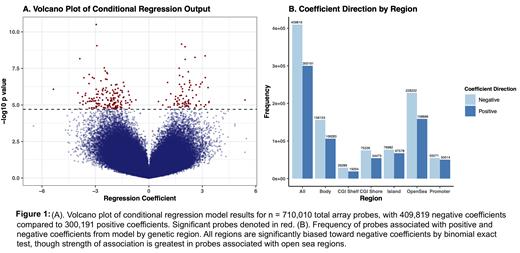Abstract
Background: Aberrant patterns of DNA methylation constitute a key feature of pediatric acute lymphoblastic leukemia (ALL) at diagnosis, however its role as a predisposing or early contributor to the development of ALL remains unknown. We employed a discordant monozygotic twin model to identify epigenetic variation associated with future development of pediatric ALL through evaluation of DNA methylation at birth.
Methods: Twin pairs discordant for the development of pediatric ALL were identified using linked data from the California Cancer Registry and California Birth Statistical Master File spanning from 1989 to 2015. Archived dried neonatal blood spots were obtained from 86 same-gender twin pairs with available materials from the California Biobank Program. Following isolation of genomic DNA from DBS samples, monozygosity was confirmed in 43 of 86 twin pairs through an identity-by-descent analysis from a genome-wide SNP-array. Epigenome-wide DNA methylation assessment of the 43 discordant monozygotic twin pairs was conducted using the Illumina Infinium MethylationEPIC BeadChip kit (Illumina, San Diego, CA, USA). Data preprocessing and quality control measures were conducted in R, using SeSAMe for data normalization. Two twin pairs were omitted due to failure to pass quality control measures. Within-pair analysis was conducted through identification of array probes with absolute differences in methylation beta values greater than 15% between case and control siblings of a twin pair unit. Differentially methylated probes (DMP) were identified using a conditional logistic regression model accounting for array-specific variation, nucleated cell proportions, and appropriate control for the paired nature of the dataset. Differentially methylated regions (DMR) were defined by regional correlation of p-values from the conditional logistic regression model. Gene set enrichment analysis was conducted on significant probes identified through the within pair and regression analysis.
Results: The discordant twin cohort (n = 41 pairs) included 24 female and 17 male pairs. Median gestational age was 258 days, ranging from 184 to 306 days. Age of diagnosis in the case twin ranged from <1 to 23 years (median = 5). There was no significant association between birthweight and case status (paired Wilcoxon signed rank test p = 0.22). No significant differences in nucleated cell proportions were identified in deconvolution analysis. Within-pair analysis identified a total of 18,001 probes with absolute methylation variation greater than 15% across the 41 twin pairs, with 3,984 recurrently variable across more than one pair. Gene ontology analysis of these recurrently variable sites revealed an enrichment of immune-related processes in 7 of the top 15 terms with nominal p-value <0.05, though no terms were significant after correction for multiple comparisons. Conditional logistic regression was conducted on 37 twin pairs, with T-cell cases (n=4) omitted to improve data resolution. This resulted in 240 significant DMPs with p-values below an FDR threshold of 0.05. Of these significant probes, 20 associate with genes previously reported to have altered DNA methylation in ALL at diagnosis. Regional analysis identified 10 significant DMRs with adjusted p-values below 0.05, with the top association encompassing a 454bp region on chromosome 6 located near TRIM39-RPP21 (adjusted p-value 2.39e-05). Notably, conditional regression analysis revealed a significant negative bias in coefficients (409,812 of 710,010 probes, binomial exact test p <2.2e-16), indicating a global tendency toward hypomethylation in cases compared to unaffected siblings (Figure 1). The strength of this bias was greater in probes associated with open sea regions compared to those in island regions, as well as promoter-associated probes.
Conclusions: This novel analysis of DNA methylation at birth in ALL-discordant monozygotic twins identified sites of differential methylation associated with immune regulation. In addition, these results provide evidence of an association between global DNA hypomethylation and future development of ALL in one member of a genetically identical twin pair.
No relevant conflicts of interest to declare.


This feature is available to Subscribers Only
Sign In or Create an Account Close Modal